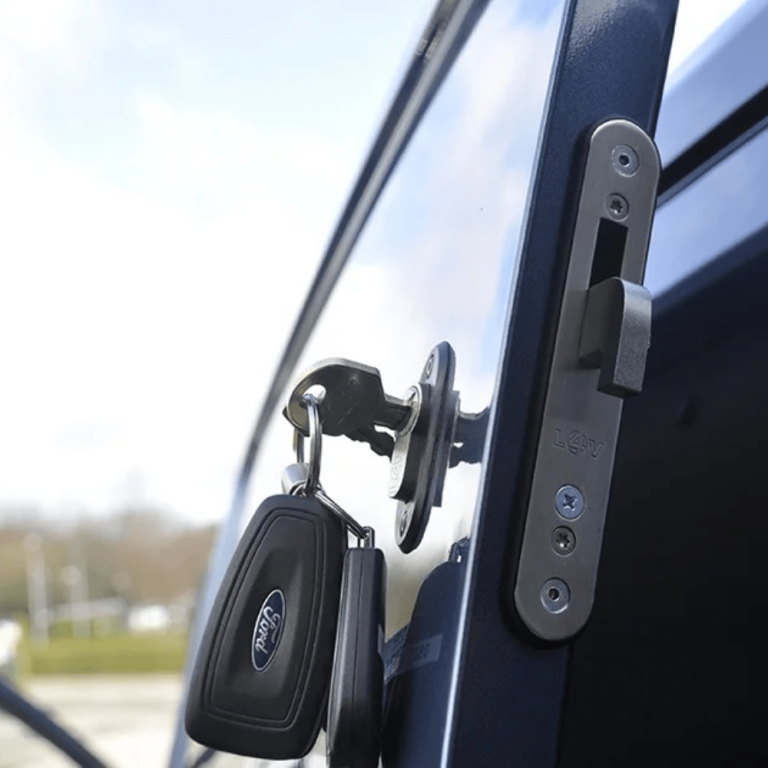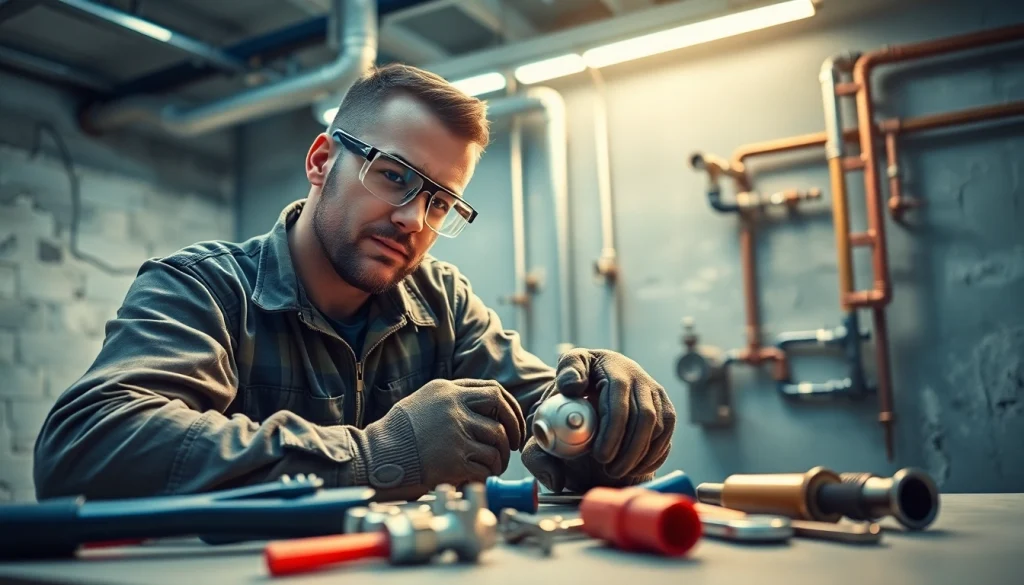Understanding Plumbing Foundations
What is Plumbing?
Plumbing is an essential system that facilitates the conveyance of fluids across various applications. It incorporates a network of pipes, valves, fixtures, and appliances designed to transport water and waste efficiently throughout residential and commercial infrastructures. Effective plumbing systems not only deliver clean water to faucets and appliances but also ensure the safe disposal of wastewater.
The Importance of a Well-Functioning Plumbing System
A properly functioning plumbing system is pivotal for maintaining hygiene, comfort, and safety in any living space. It plays a crucial role in public health by preventing the spread of waterborne diseases. Additionally, robust plumbing minimizes the risk of structural damage to buildings due to leaks and water intrusion, thus preserving property values and avoiding costly repairs.
Basic Components of Plumbing Systems
At the heart of every plumbing system are key components that work in concert to ensure optimal functionality:
- Pipes: Typically crafted from materials such as PVC, copper, or PEX, pipes form the backbone of plumbing systems, transporting water to various fixtures.
- Valves: These control the flow of water and can be found throughout the system, regulating pressure and direction.
- Fixtures: Common fixtures include sinks, toilets, showers, and bathtubs, which are the endpoints of the plumbing system where water is utilized.
- Drainage systems: Drainage systems remove waste and prevent backflow, ensuring that wastewater is safely directed away from homes and buildings.
- Water heaters: These devices provide hot water for bathing, cooking, and cleaning, playing an integral role in day-to-day living.
Identifying Common Plumbing Issues
Signs of Plumbing Problems in Homes
Over time, plumbing systems may develop various issues that can disrupt services and lead to damage. Common signs of plumbing problems include:
- Leaky faucets: Dripping faucets can waste significant amounts of water and indicate underlying issues with seals or valves.
- Slow drains: If water is taking longer than usual to drain from sinks or tubs, it may be a sign of a clog.
- Low water pressure: This can indicate leaks or blockages in the system that prevent adequate water flow.
- Unpleasant odors: Foul smells from drains or pipework may suggest the presence of sewage or organic material buildup.
- Water stains: Discoloration on walls or ceilings could point to hidden leaks, which can lead to mold growth if not addressed promptly.
Emergency Plumbing Situations and Solutions
Some plumbing issues require immediate attention to mitigate damage and restore normal function. Common emergency situations include:
- Pipe bursts: If a pipe bursts, the immediate action is to shut off the main water supply to prevent flooding.
- Overflowing toilets: Stopping the water supply and clearing any visible clogs can help manage the situation until professional assistance is available.
- Significant leaks: Identifying the source and placing a bucket to catch dripping water can provide temporary relief while awaiting repair services.
Preventative Measures for Plumbing Maintenance
Regular maintenance can significantly extend the lifespan of plumbing systems. Engaging in proactive measures includes:
- Regular inspections: Schedule annual checks of your plumbing systems to identify potential issues before they escalate.
- Drain cleaning: Utilize enzymatic drain cleaners periodically to prevent buildup and clogs.
- Monitoring water pressure: Keeping an eye on water pressure can help detect underlying leaks or issues in the system.
- Replacing old fixtures: Consider upgrading outdated plumbing fixtures, as modern products are often more efficient and less prone to failure.
Essential Plumbing Tools Every Homeowner Should Have
Basic Tools for Routine Plumbing Tasks
Homeowners should be equipped with fundamental tools to manage routine plumbing tasks effectively. Essential tools include:
- Pliers: Various types, including groove joint and needle-nose pliers, are invaluable for gripping and twisting.
- Tape measure: Accurate measurements are crucial for ensuring proper fit when installing components.
- Pipe wrench: These are specifically designed to grip and turn pipe fittings, making them essential for installation and removal tasks.
- Plumber’s putty: This sealing compound is vital for ensuring leak-free joints in fixtures.
Advanced Tools for DIY Plumbing Repairs
For more complex plumbing repairs, homeowners might consider investing in advanced tools such as:
- Drain auger: This tool is essential for clearing stubborn clogs that standard methods cannot dislodge.
- Pipe cutter: A clean cut is vital when replacing sections of pipe or fittings, and a pipe cutter achieves this effectively.
- Pressure gauge: Monitoring water pressure directly can provide insights into the functionality of the plumbing system.
How to Properly Maintain Plumbing Tools
To ensure longevity and performance, proper maintenance and storage of plumbing tools are necessary. Tips include:
- Cleaning: Clean tools after each use to prevent rust and corrosion.
- Lubricating moving parts: Regularly lubricate joints and moving components to maintain functionality.
- Proper storage: Store tools in a dry, organized space to reduce the risk of damage and loss.
DIY Plumbing: Techniques and Tips
Simple Repairs You Can Do Yourself
Many plumbing repairs can be completed without professional assistance, empowering homeowners to save costs. Some simple DIY tasks include:
- Fixing a leaky faucet: Often caused by worn washers, this can be addressed by replacing the faulty component.
- Unclogging a drain: A combination of baking soda and vinegar can be effective for mild clogs without harsh chemicals.
- Replacing a toilet flapper: A worn flapper can lead to constant running water; replacing it is straightforward and reduces water waste.
When to Call a Professional: Recognizing Limits
While many tasks can be tackled independently, some situations necessitate professional intervention. Key indicators include:
- Severe leaks: If the damage is extensive or persistent, it’s crucial to consult a professional.
- Complex installations: Jobs involving major components like water heaters or comprehensive re-piping should be left to experts.
- Unsafe conditions: If there is a risk of exposure to sewage or hazardous materials, a trained professional is essential.
Safety Precautions for DIY Plumbing Projects
Prioritizing safety is integral during any DIY plumbing project. Essential safety precautions include:
- Shutting off water supply: Before initiating any plumbing work, always ensure that the water supply is turned off.
- Wearing protective gear: Use gloves and safety goggles to protect from potential hazards.
- Following instructions: Carefully adhere to manuals and tutorials to complete tasks safely and correctly.
Innovations in Plumbing Technology
Smart Plumbing Solutions for Modern Homes
With the rise of smart home technology, plumbing systems have adapted. Smart solutions include:
- Smart leak detectors: These devices can alert homeowners of leaks before they lead to significant damage.
- Automated water flow systems: Certain systems can regulate water usage based on real-time demands, leading to increased efficiency.
Sustainable Plumbing Practices and Materials
The plumbing industry is increasingly focused on sustainability, promoting practices such as:
- Water-efficient fixtures: Low-flow toilets and faucets reduce water consumption without sacrificing performance.
- Recycled materials: Many modern pipes are made from recycled materials, reducing environmental impact.
The Future of Plumbing: Trends to Watch
As technology and environmental concerns continue to evolve, plumbing is heading in exciting directions:
- Integration of IoT: Internet of Things (IoT) will play a significant role in monitoring and managing plumbing systems remotely.
- 3D printing: Innovations in 3D printing may offer unique solutions for custom plumbing parts that are more efficient and tailored to specific needs.





